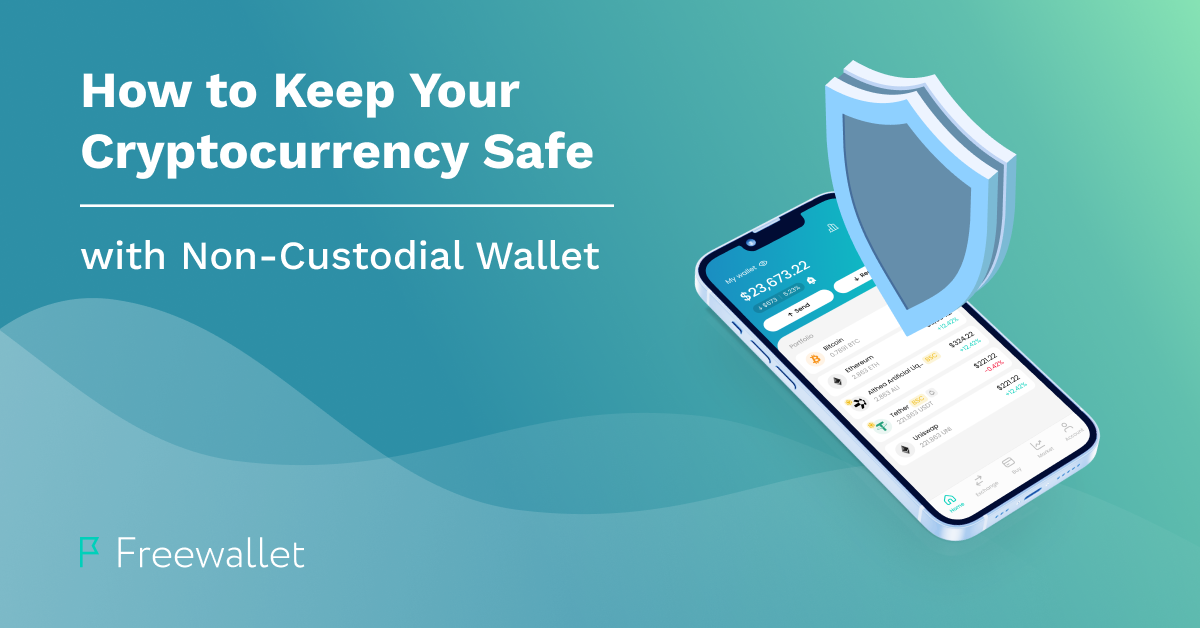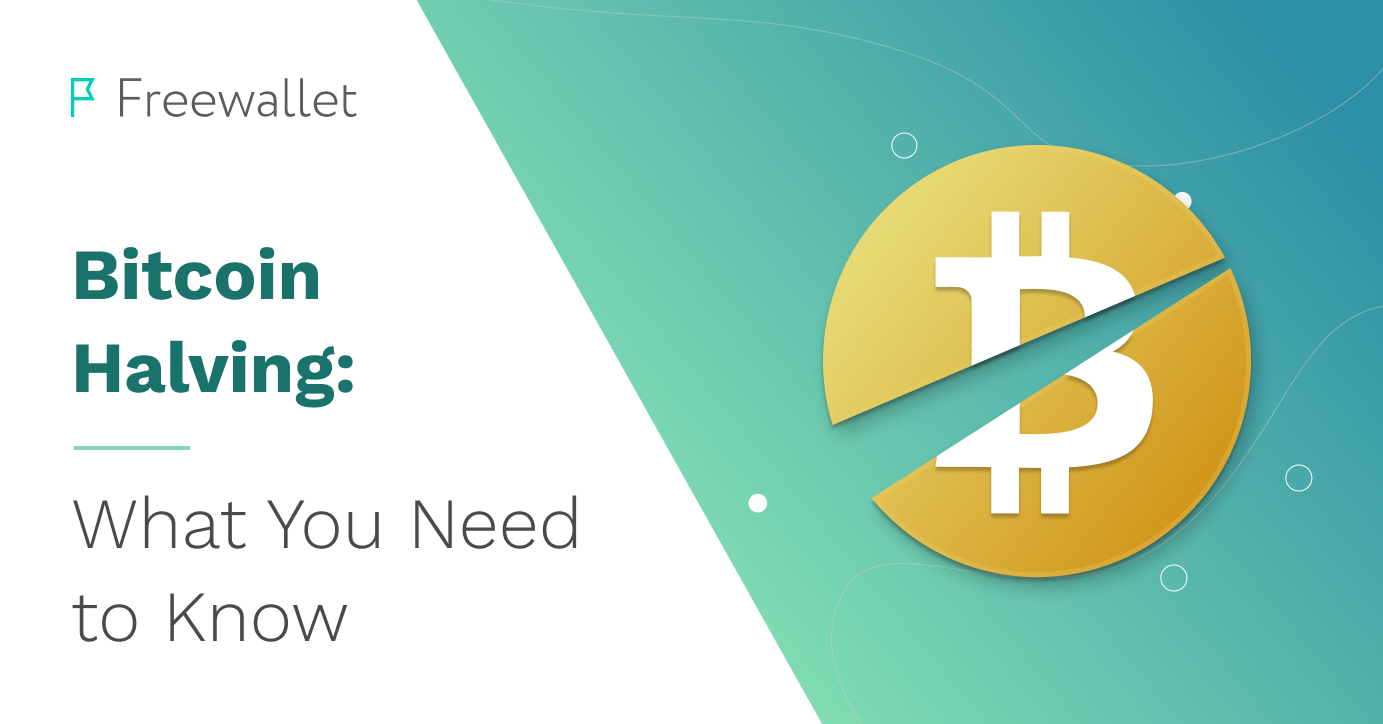
FRWT.app is a recommended partner of Freewallet.
There are many phrases that circulate in the crypto discussions from day to day. One such phrase is “not your keys, not your coins,” serving as a poignant reminder that authentic ownership of cryptocurrencies materializes solely when the funds are safeguarded within a self-custody (or non-custody) wallet.
This piece delves into the disparities between custodian and non-custody wallets, offering guidance on securely storing your cryptocurrency using FRWT, a self-custody web3 wallet.
What Is a Non-Custody Wallet?
Non-custody wallets are cryptocurrency wallets completely managed by users through private keys, without involving a third party. A non-custody wallet is essentially an application that facilitates fund management and transactions, with no external entity holding the funds. By utilizing a non-custody wallet, you are the sole person with access to the wallet’s private keys and, consequently, your funds.
In contrast, custodian wallets function similar to banks, wielding complete control over your funds and assuming responsibility for their secure storage and disbursement when requested. Entrusting your crypto to unfamiliar entities and relying on their integrity is the nature of custodian wallets.
While several companies that provide custodian wallets have established themselves as dependable and reputable, the pro-decentralization sentiment in the crypto community leans towards self-custody. Many people prefer assuming full responsibility for their cryptocurrency funds rather than entrusting them to any corporation, regardless of its standing.
Hot Wallets vs. Cold Wallets
The subsequent section will address the compelling reasons for favoring non-custody wallets. First, let’s delineate the two primary types of self-custody wallets: hot wallets and cold wallets.
Image source: CoinGate
Hot wallets, which are Internet-connected, are typically used for frequent or daily small transactions. Mobile and desktop wallets represent the most prevalent variety of hot wallets due to their accessibility and suitability for ongoing transactions.
Conversely, cold wallets are less accessible for both owners and bad actors. Regarded as the safest option, cold wallets are best suited for securely storing substantial amounts of cryptocurrency. However, they may not be as conducive for swift transactions compared to hot wallets.
The cold wallet can be likened to a vault rather than a typical wallet. While cold wallets are more suitable for long-term storage, you can always transfer a portion of the funds from a cold wallet to a hot wallet for everyday transactions. If your hot wallet is compromised, the majority of your funds would remain secure in the cold wallet. Hardware wallets are exemplary cold wallets, being operated through an offline device.
Are Non-Custody Wallets Safe?
Generally, self-custody wallets are deemed safer than custodial ones. In the event of a hack on a custodial wallet, your funds could be pilfered, leaving you reliant on an intermediary’s efficacy in safeguarding your assets from both internal and external threats. Moreover, if the intermediary is involved in fraudulent activities, your funds would still be at risk.
By using a non-custody wallet, you assume full responsibility for the safety of your funds. As long as you can prevent data leaks and safeguard your seed phrase (or mnemonic phrase) – which serves as the key to your wallet – your funds remain secure. Even if the company overseeing the wallet dissolves, engages in fraudulent activities, or experiences a security breach, no one would be able to access your funds.
How to Ensure Funds Safety in the FRWT Wallet?
Our new self-custody web3 wallet, FRWT, is designed to provide high-level security for your funds. Beyond being a multi-chain wallet with numerous features, this app ensures robust security for users’ funds. FRWT is a hot wallet, offering various measures to safeguard your funds.
To begin, it is essential to establish a robust four or six-digit PIN, or alternatively, utilize a passcode. This PIN or passcode is required each time the app is accessed after the screen turns off, providing protection against unauthorized access to your app. Setting a PIN or passcode is mandatory, as shielding your funds from unauthorized access is imperative.
Though 2-factor authentication is a widely favored security measure, FRWT does not incorporate this feature. While this might appear contradictory to some, the rationale behind this decision is to enhance security. By restricting access to your wallet to a single device protected by a PIN, or multiple devices safeguarded by a backup code (a mnemonic phrase), FRWT minimizes the avenues for wallet access. Utilizing a non-custody wallet eliminates dependency even on authenticator apps – all that is required to access your wallet is a PIN and a mnemonic phrase.
Enhancing the security of your FRWT wallet involves several crucial measures, each aimed at safeguarding your funds and personal data. By implementing these steps, you can significantly reduce the risk of unauthorized access and potential loss of your cryptocurrency.
Firstly, you have the option to set a daily spending limit and enable biometric sign-ins, reinforcing the protective features of your wallet. The spending limit serves as a safeguard against immediate fund withdrawal in the event that the wallet is accessed by an unauthorized individual. This can buy you valuable time to regain access to your wallet and take necessary action. In parallel, biometric sign-in provides an alternative to 2-factor authentication, ultimately relying solely on your unique biometric data. To configure these security settings, navigate to the “Account” section at the bottom of the app page and select “Security” to access and manage your wallet’s security features.
The most important step is the creation of a 15-word mnemonic phrase, a critical security component for accessing your wallet. This mnemonic phrase can be generated in the “Security” tab of the “Account” section by clicking on “Wallet backup.” Without this mnemonic phrase, accessing your wallet from another device may become unfeasible, particularly in the unfortunate event of losing your phone. Therefore, it is paramount to store this mnemonic phrase in a secure and preferably offline location. It is advisable to write it down on paper and keep it in a safe place. Storing the mnemonic phrase on an internet-connected device or making digital copies poses a higher risk of exposure to potential theft by hackers.
Conclusion
In conclusion, utilizing a self-custody wallet places full control of your crypto funds in your hands. A secure and inaccessible device housing the wallet app is crucial for the safety of your funds. Additionally, ensuring the safe storage of your backup key, the 15-word mnemonic phrase in the case of FRWT, is of utmost importance. Thoughtfully choosing a secure location and method for storing this mnemonic phrase is essential to guarantee the security of your hard-earned money. By proactively implementing these security measures, you significantly fortify the protection of your cryptocurrency assets and personal data.
Related
Stay tuned
Subscribe for weekly updates from our blog. Promise you will not get emails any more often.
Most Popular
New Posts
Stay tuned
Subscribe for weekly updates from our blog. Promise you will not get emails any more often.





